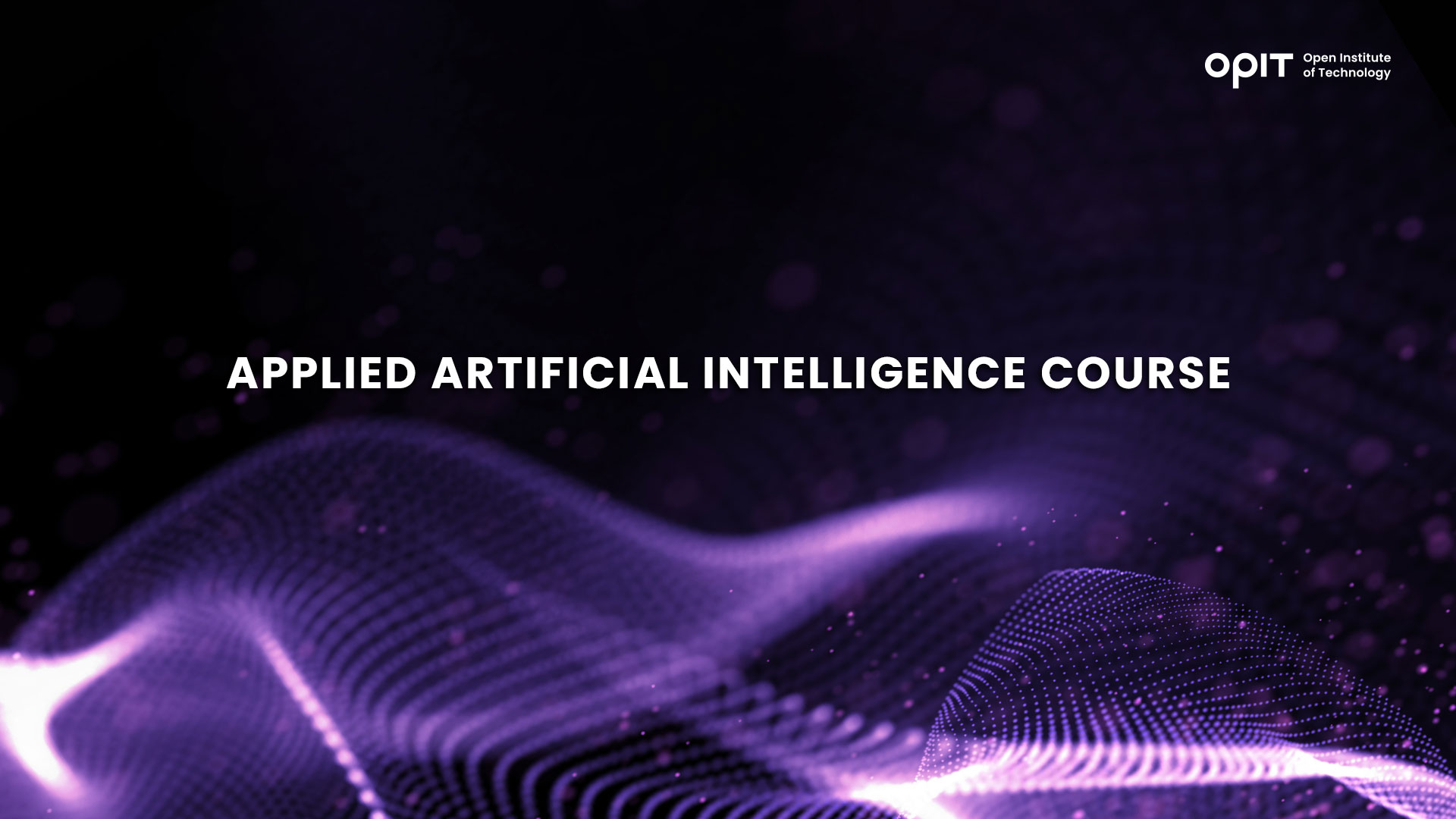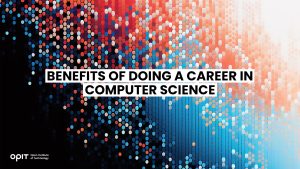

Growth is inevitable in the AI sector. According to Statista, the already-booming industry looks set to go from a value of $100 billion in 2021 to $2 trillion by 2030, increasing by a multiple of 20 to become one of the world’s biggest industries. Naturally, the need for skilled AI professionals will grow alongside that enormous scaling.
That’s where you come in.
With the right applied AI course, you can develop both the knowledge of the foundational theory that sits behind AI and learn how to apply that theory in a real-world setting. Here are four of the best applied AI courses to get you started.
Factors to Consider When Choosing an Applied AI Course
Every search for a new course starts with figuring out the strengths and weaknesses of each one you consider. These factors help you do that, ensuring you don’t spend your hard-earned money on a course that fails to equip you with skills that make you desirable to employers.
Course Content and Curriculum
AI is such an expansive field that every applied AI course has the potential to cover different topics and subjects. Think about what you want to learn (and your prospective career path), then align your course selection with that intended path.
Course Duration
Applied AI courses can vary tremendously in length, from several years for degree-level courses to a few months for online courses. Ask yourself how long you wish to spend studying. Also, consider the flexibility of the course, such as whether you’ll be able to fit your studies around your existing work and family commitments.
Instructor Expertise
AI is a burgeoning industry, meaning expertise levels vary from course to course. For applied AI courses, in particular, you want professors who combine in-depth knowledge of the theory with real-world experience. What have they done in the industry? If the answer is “nothing,” they may not be able to guide you down the path to an AI-centric career.
Course Fees and Financial Aid
Course fees vary massively depending on the type of course you take. For example, those in the U.K. can easily spend between £15,000 and £25,000 on university-level courses, with Aston University’s tuition fees of £23,200 being somewhat typical. Online and self-learning courses cost considerably less, so you need to figure out how much you’re willing to spend (and if you can get any help with your fees) before moving forward.
Job Placement and Career Support
Though you need one eye pointed toward the present when choosing between applied AI courses, the other needs to be firmly pointed toward the future. What prospects will you have when you complete the course? In other words, does the course provide you with a direct path into the industry, along with support, or are you left to fend for yourself once you have your qualification?
Top Choices for Mastering Artificial Intelligence
Choices abound when you jump online to find applied AI courses. The following selection offers a nice mix, from online certifications offered by industry professionals to a couple of courses from some of the world’s most prestigious universities.
Course 1 – IBM Applied AI Professional Certification
If you’re fresh to the world of AI (though ideally not new to computer science), IBM’s industry-specific applied AI courses offer both foundational knowledge and a respected qualification. They’re flexible, too, with this course lasting for six months but only requiring three hours of work per work. Those in full-time work (or education) can fit the course around their lifestyle, while those who have time to burn can complete the entire course much quicker, earning degree credits along the way.
Key Features and Benefits
- Certification from one of the most respected companies in the AI space
- Direct exposure to use cases in the deep learning, machine learning, and neural network spheres
- Learn how to build AI-powered solutions (like chatbots) using Python and IBM’s Watson AI
- Over three-quarters (77%) of students report career improvement
Pricing and Enrollment
IBM’s course is available via Coursera and offers a seven-day trial you can use to get to grips with its structure and examine its modules. It’s fully online, which improves flexibility at the cost of not having direct access to a professor, and you’ll receive an IBM badge upon completion. You’ll pay a monthly fee of $35 (approx. €31) and can enroll at almost any time.
Course 2 – Computer Science for Artificial Intelligence (Harvard University)
Harvard University may be seen as the gold standard in the United States, but what many don’t know is that it offers a comprehensive suite of online courses that almost anybody can take. Its Computer Science for Artificial Intelligence course is a perfect example. Comprising of two courses – an introduction to computer science followed by an introduction to applying computer science principles to AI using Python – it lasts for five months. You get access to professors and can learn at your own pace, with the course recommending between seven and 22 hours of study per week.
Key Features and Benefits
- Two modules give you a crash course in applied AI and the computer science theory that underpins it
- Director access to Harvard professors Doug Lloyd, Brian Yu, and David J. Malan
- Complete flexibility in how and when you learn
- Get to grips with Python and build experience with machine learning libraries
Payment and Enrollment
As an online course, Computer Science for Artificial Intelligence is available for enrollment whenever you’re ready, with the five months starting once you’re enrolled. It costs £277 (approx. €312) and you’ll need to create an account with the EDX website (which hosts the course) to get started.
Course 3 – Artificial Intelligence Graduate Certificate (Stanford University)
Ranked as the third-best university in the United States for general computer science and AI teaching, Stanford University has opened up some of its best courses to online learners. Entirely online (and instructor-led for those who want more guidance) this is one of those applied AI courses that is equivalent to a full graduate degree. You’ll complete at least one required course – with a choice between machine learning and the principles of AI – and select up to three electives. It’s the electives that make this course stand out, as there are 18 to choose from, with the right combination giving you a chance to specialize for specific career paths.
Key Benefits and Features
- Direct tuition from prominent Stanford faculty members, including Andrew Ng and Chelsea Finn
- Some level of autonomy in how you study thanks to the online-centric nature of the course
- Specialize in specific areas of AI thanks to a wide range of electives
- You get a degree from one of the world’s foremost colleges in the AI field
Payment and Enrollment
Let’s get the bad news out of the way immediately – this isn’t a cheap course. As a full-on graduate degree, it costs between $18,200 and $22,400 to take (approx. €16,235 and €19,980), though financial aid may be available for some students. You can’t just hop onto the course, either, as a college-level understanding of calculus, linear algebra, Probability Theory, and several programming languages is required. Stanford itself calls this one of its most difficult courses and recommends that you take several foundation courses (ideally at degree level) before enrolling.
Course 4 – Master in Applied Data Science & AI (OPIT)
As a full postgraduate course that takes between 12 and 18 months to complete, OPIT’s Master in Applied Data Science & AI is an interesting case for one simple reason – there are no computer science prerequisites. The course is open to everybody and it teaches both advanced applied AI concepts and the foundational knowledge needed to understand them. You’ll complete a pair of terms containing courses, with your final term dedicated to a project or thesis that puts what you’ve learned into practice.
Key Benefits and Features
- The course is supplied by an institution with accreditation from the European Qualification Framework
- It’s a fully remote course that gives you control over how and when you learn
- Discounts and payment plans are available, as well as scholarship and funding options
- You come out of the course with a recognized postgraduate degree
Payment and Enrollment
Though the course usually costs €6,500, OPIT offers “early bird” discounts that allow you to enroll for €4,950, assuming you sign up early enough. Intakes are semi-regular, with the next one scheduled for October 2023 and international students get 90 credits under the European Credit Transfer and Accumulation System (ECTS) for successful completion.
Tips for Success in an Applied AI Course
As you can see, you have plenty of options for applied AI courses, from professional certifications designed to get you into a career quickly to full postgraduate degrees. Regardless of your choice, these tips will help you get your precious certification:
- Dedicate time for study – Time well managed is time well spent. Understand that you’ll need to dedicate self-learning time to get to grips with concepts you’re taught during classroom hours.
- Set clear goals – Going into an applied AI course with no sense of what you’re supposed to get out of that course leaves you directionless upon completion. Make sure you know exactly what you stand to gain before committing time (and money) to a course.
- Network often – Even online courses give you a chance to get involved in teamwork projects and speak to experienced industry professionals. Take those chances. The more connections you build during your studies, the more opportunities you’ll see coming out of the back end.
- Seek guidance – As attractive as the prospect of self-guided learning may be, we all need a helping hand from time to time. If a course provides direct access to tutors and professors, use it.
- Stay up to date – AI is a fast-moving field, with every change and advancement bringing new challenges and opportunities. Stay on top of what’s happening in the industry. You may just find that one course sets you up to be ready for those changes, while another may not.
Build Your Skills With an Applied AI Course
Whether you go down the full postgraduate degree route or you choose a professional qualification, an applied AI course is a route into one of the world’s fastest-growing industries. Simply put, we’re set for an AI explosion. Over the next decade, AI will permeate everything we do, from complex computing to simple office tasks, and you can use the right course to give yourself the skills you need to take advantage of that fact. Explore the options shared in this article, ask yourself what you want to achieve in your career, and make the educational choice that’s right for you.
Related posts

Life is unpredictable. While many of us have specific hopes and expectations of how our futures will turn out, things don’t always go as expected. There are many variables and unexpected incidents that can interfere and force you to alter your plans, and this is particularly true when it comes to education.
For instance, you might have had plans to study a specific subject, but had to deviate from those plans due to unforeseen circumstances. Or you may have had to enter the workforce in an occupation different from the one you sought in an effort to earn an income, a move that may not provide you with the time or opportunity to achieve your desired educational aims.
In short, every individual’s career pathway is different, and very few go exactly as we expect from the outset. Fortunately, even if you experience a few false starts or sudden twists in your pathway, there are always options available to help you get back on track.
The Unpredictable Nature of Education
In theory, the educational process seems simple. You select a course of study that interests you from the vast array of subjects and prospective professions, select the appropriate classes, acquire the knowledge and skills you need to succeed, and then embark on your profession.
In reality, however, as many people know from firsthand experience, the road to education is often far from straightforward. Here are just some of the many challenges that can take your educational path in a completely different direction:
- Life’s Curveballs: As touched on in the introduction, life is impossible to predict. Financial hardships, health issues, and family emergencies are just some of the unfortunate occurrences that might derail even the most perfectly planned educational regime.
- Changing Interests: People’s desires and preferences don’t necessarily stay the same throughout their entire lives. As you grow, learn, and have new experiences, your interests may change, and so, too, may your educational objectives.
- Pressure and Burnout: Some academic paths are particularly challenging, demanding intense levels of study and hard work. This can sometimes prove too much to bear, even for the most resilient students.
- Failures and Setbacks: Conventional education largely builds around tests and examinations, requiring students to demonstrate their competencies repeatedly. It’s a system that doesn’t suit everyone, and test failures can lead to setbacks and delays.
- Inequality: People can be born with very different privileges and levels of access to education. Those in certain parts of the world may find it much more challenging to complete their education path for financial, cultural, or even political reasons.
- Late Bloomers: People develop at different paces. Some may struggle educationally early on in their lives, forcing them to make certain concessions or sacrifices related to their studies, only to find their feet later in life once they’ve entered the world of work.
Whether you’re a late bloomer, have had your educational aspirations delayed by personal problems, desire to learn new skills and try something different, or want to begin a fresh chapter in your professional life, the Open Institute of Technology (OPIT) may be able to help.
Introducing OPIT
OPIT is an online teaching platform, making high-level technological educational programs accessible to all, no matter their age or background. Offering education in fields like computer science, artificial intelligence, and digital business, OPIT provides a curated collection of degrees. In addition, they offer classes taught by world-leading tutors imparting the wisdom and skills students need to achieve their goals and become the tech leaders of tomorrow.
Meanwhile, for those who have had somewhat tumultuous or unpredictable educational paths, OPIT offers the perfect course corrector: the OPIT Foundation Year.
The OPIT Foundation Year
OPIT’s Foundation Year is a Pre-Tertiary Certificate in Information Technology, fully aligned with MQF/EQF Level 4 standards and valued at 60 ECTS credits. Lasting just one year, this program essentially serves as a comprehensive yet accessible springboard towards higher-level education, creating a path towards degrees and careers in dynamic, flexible fields, like computer science and digital business.
Like other OPIT programs, the Foundation Year is delivered entirely online via the OPIT Virtual Learning Environment. Combining live lectures, asynchronous content, and interactive assessments, students enjoy diverse and dynamic study experiences, acquiring core skills like academic writing, mathematics, and computer literacy, and building a bedrock of knowledge and confidence before taking their next steps.
Who Is the Foundation Program For?
The Foundation Program is designed to provide a solid base upon which to build the technological education many students need. It’s the perfect choice for those who are eager and ambitious to enter professions in AI, data science, and computing, but don’t feel that they have the necessary core skills and knowledge needed to dive straight into a degree.
Entry requirements are relatively relaxed in order to allow as many students as possible to enjoy the benefits of this program. With that said, applicants should ideally hold an MQF/EQF Level 3 or equivalent qualification, with the intention of pursuing a bachelor’s degree. A minimum of B2 level of English proficiency is also required, as this is the working and studying language of the institution.
What the Foundation Year Provides
Perhaps you’ve recently graduated, are considering a career change, or finally have the opportunity to return to education after initial delays or unexpected disruptions to your original plans. Either way, the Foundation Year can help you enjoy:
- Greater Self-Confidence: Foundation Year graduates gain the fundamental skills they need to enter degree programs with much more self-belief and assuredness.
- Superior Tech Knowledge: Lasting two terms, this course explores mathematics, academic reading and writing, and provides an introduction to computer hardware and software.
- Foundational Mathematics: Mathematics literacy forms a large part of the study focus for the Foundation Year, helping students feel more comfortable with numbers and formulas.
- Flexible Learning: Unlike more rigid, conventional education environments, OPIT gives you the freedom and flexibility to study at a pace that suits you best, all from the comfort of home.
- Global Community: OPIT is an international institution, with staff and students from all around the world eager to share knowledge, exchange ideas, and help one another.
Take Your Next Steps to Success With the OPIT Foundation Year
If you’re curious about a career in technology or have always wanted to work with AI, data, and computers, but struggled to find the time and opportunities you need to acquire relevant skills and knowledge, the Foundation Program was made for people like you.
It’s the ideal entry point into the exciting world of online education, and the perfect first step towards a prestigious degree from an innovative and increasingly successful institution. Download the brochure to learn more about it, or start your online application, today.

Students today have a broader range of fields of study to choose from than ever before, but with the world becoming increasingly technological and computers increasing in influence and importance, pursuing a career in computer science often proves a smart, strategic choice.
There are numerous benefits and career paths associated with studying and working in computer science, and we’ll be listing just a few of them in this guide.
High Average Salaries
With the rising cost of living in many parts of the world, it’s unsurprising that many students are thinking several decades ahead to determine what level of starting salaries they could obtain in different career fields.
Many are also seeking professions that offer the opportunity for growth and the ability to advance up the ranks over time, thus increasing their salary and their quality of life in the process.
If a strong, stable salary with the opportunity for improved income is one of your top career priorities, computer science should be at or near the top of your list of prospective careers.
According to recent data, computer scientists earn an average of over €65,000 per year, with certain jobs, like IT project leader and data scientist, paying ever higher. Starting salaries are strong, too, with graduates earning anywhere from €46,000 to €60,000, depending on their chosen profession and level of qualifications.
There are similarly high average salaries reported around the world in computer science and related fields such as data science and AI/ML engineering. These numbers are projected to increase in the years to come, pointing to computer science as a way for graduates to get off to the best financial start of any career.
Unrivaled Flexibility
A common problem with some subjects and courses is that they only provide graduates with a narrow set of skills and a similarly narrow range of potential professions to which they can apply those skills.
That’s not the case with computer science. Graduates in this field can enjoy instant access to a remarkably diverse array of career opportunities, with even newer opportunities being created all the time as technology evolves and innovations emerge.
A few of the many industries and roles you might choose to enter in the field of computer science include:
- Healthcare: As a software developer, data analyst, or cybersecurity expert
- Finance: As a fintech engineer, blockchain developer, or security analyst
- Media: As a graphics programmer, AI developer, or game developer
- Education: As an analyst, software developer, or machine learning engineer
Guaranteed Opportunities
Some career paths are more limited than others, with relatively low numbers of opportunities, recurring risks of job loss, or difficulty obtaining employment in the first place.
Again, with computer science, this simply isn’t the case. At a time when 75% of companies plan to embrace AI and other technologies by 2027, and businesses of all sizes and industries are now relying on computers more than ever before, computer science graduates can enjoy almost unbeatable job security.
Opportunities will continue to grow for people with good computing knowledge, whether that be in the obvious fields like software and web development, engineering, and AI development, or more niche sectors.
With so many options, you’re effectively guaranteed a long, rewarding career if you put in the necessary time and effort needed to establish a strong foundation of computing skills.
Rapidly Expanding and Evolving Industries
It’s no secret that the world of technology is a dynamic and fast-moving one. In the past 20 years alone, we’ve seen the proliferation of the internet, the rapid advancement of smartphones and wearable devices, the emergence of AI, and so much more.
In the years ahead, engineers and developers will continue to explore the boundaries of modern technology’s powers and potential, driving new innovations and improvements and opening more exciting job opportunities for those already established and experienced in this field.
Getting into computer science now could therefore provide a solid foundation for a career filled with excitement as you uncover and explore new ways of working with computers in fields as diverse as healthcare, finance, education, entertainment, manufacturing, logistics, and beyond.
Start Your Computer Science Career at OPIT
We’ve discussed some of the many benefits associated with careers in computer science, from the high starting salaries to the rapidly growing array of job options available to graduates. By now, you may be eager to follow this particular career path and take advantage of the wealth of opportunities.
If you’re wondering how to start, the Open Institute of Technology (OPIT) may hold the answers you need. As an exclusively online learning platform, specializing in computer science and digital business, and staffed by some of the world’s leading tech experts, OPIT is producing the tech leaders of tomorrow.
Some of the many advantages of learning with OPIT include:
- Accessible and flexible online education that matches your learning style and schedule
- Heavy focus on real-world applications of the skills you acquire
- An international community of like-minded students from around the globe
- A top team of tutors and lecturers from varying fields and industries
- Progressive assessment of skills and understanding – not constant exams
OPIT offers a small, curated selection of courses for those seeking to gain the technological skills and knowledge to succeed in their chosen areas of expertise. That includes a BSc (Hons) in Computer Science – a six-term program, worth 180 ECTS credits.
Numerous IT industry leaders and experts helped develop this fully accredited undergraduate degree, which is online and accessible to all. Like other OPIT courses, it offers a flexible learning program, with progressive assessments, fast-track options, and the opportunity to be part of a growing community of learners and tutors.
If the benefits of doing a career in computer science interest you, download the OPIT BSc in Computer Science brochure or fill out an online application today and take your first step toward a rewarding and fulfilling profession.
Have questions?
Visit our FAQ page or get in touch with us!
Write us at +39 335 576 0263
Get in touch at hello@opit.com
Talk to one of our Study Advisors
We are international
We can speak in:


